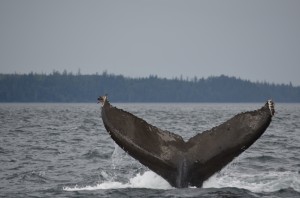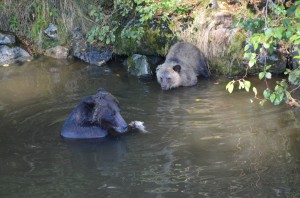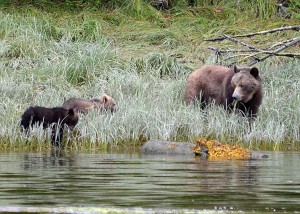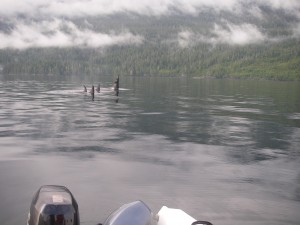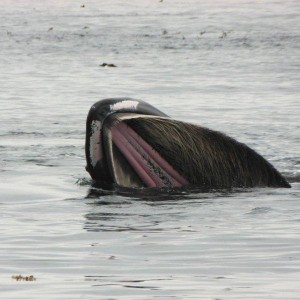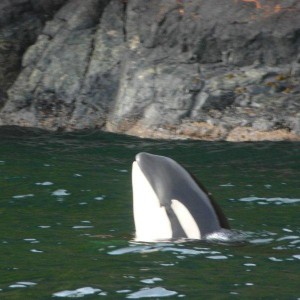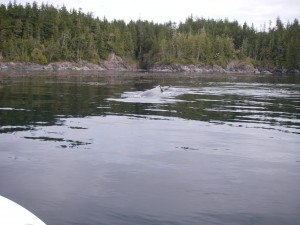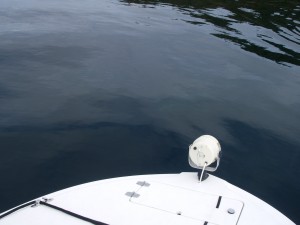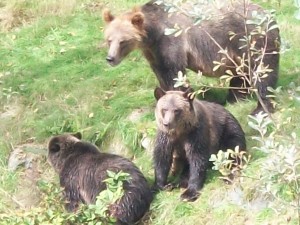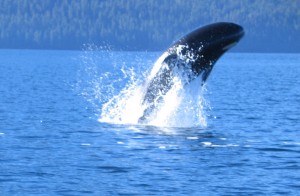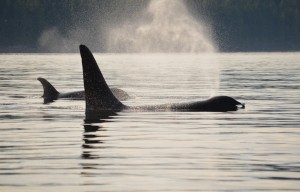
This is a classic picture of a male orca (large dorsal fin) and a female orca a.k.a. killer whales or blackfish. Growing up in Campbell River on Vancouver Island I knew orca as blackfish the name killer whales or orca became more common after the start of the Eco tours. The area adjacent to Johnstone where we frequently view the orca is known as Blackfish Sound a name predating the operation of Eco tours.
